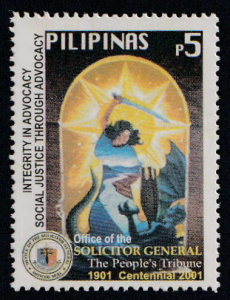Trivia about the Office of the Solicitor General
Act No. 136 dated June 11, 1901, which became effective on June 16, 1901, created the position now occupied by the Solicitor General. Under Section 41 of the Act, an “officer learned in the law” is required to assist the Attorney General, who headed the Bureau of Justice. lt was “the special duty of the Solicitor General to conduct and argue suits and appeals in the Supreme Court, in which the Philippine Government is interested.” Act No. 222 established the Department of Finance and Justice. The Bureau of Justice was placed under the supervision of the new department. Act No. 683 created the position of the Assistant Solicitor General. Act No. 2666 would later divide the department into a Department of Justice and a Department of Finance. The Attorney General and Solicitor General continued to represent the Government in the Supreme Court and lower courts.
Act No. 4007, which was enacted in 1932, abolished the position of the Attorney General. His functions were taken over by the Secretary of Justice. Act No. 4007 also named the Solicitor General as the head of the Bureau of Justice. As a result of the rapidly burgeoning number of cases involving the Government, the Solicitor General had to concentrate on advocacy and court appearances.
Executive Order No. 94 of 1947 renamed the Bureau of Justice as the Office of the Solicitor General. Subsequently, Congress passed R.A. No. 335 in 1948 to confirm this change and to provide for a First Assistant Solicitor General who would be the second highest official in the Office.
The functions which the Bureau of Justice used to have were gradually transferred to newly-created offices and divisions of the Department of Justice, A succession of laws relieved the Office of the Solicitor General of some of its burdens. Section 1660 of the old Administrative Code previously provided that the head of the Bureau of Justice “shall have general supervision and control over provincial and city fiscals (now prosecutors) and attorneys and over other prosecuting officers throughout the Philippines.” The Office of Special Prosecutors, which the Solicitor General formerly headed, was later converted into a division of Special Attorneys by R.A. No. 311 of 1948. The Office of the Government Corporate Counsel, which was headed by the Solicitor General under Executive Order No. 382 of 1950, became a separate office in the Department of Justice by virtue of R.A. No. 2327.
From a motley staff of one Solicitor General, an Assistant Solicitor General and a handle of assistant attorneys in the 1900s, the Office of the Solicitor General has grown throughout the years. Today, in accordance with E.O. No. 292, the Administrative Code of 1987, the Solicitor General is assisted by fifteen Assistant Solicitors General and more than a hundred Solicitors and Associate Solicitors, who are divided into fifteen divisions. Due to the fact that despite the lapse of almost 15 years, the number of lawyers has not been increased, each lawyer at the OSG right now handles an average of more than 1,700 cases. Aside from handling appealed cases and original petitions before the Supreme Court and the Court of Appeals, a Solicitor or Associate Solicitor engages with the best lawyers of the country in countless trials before the lower courts. This, unarguably, is the OSG’s burden and glory.

Recent Comments